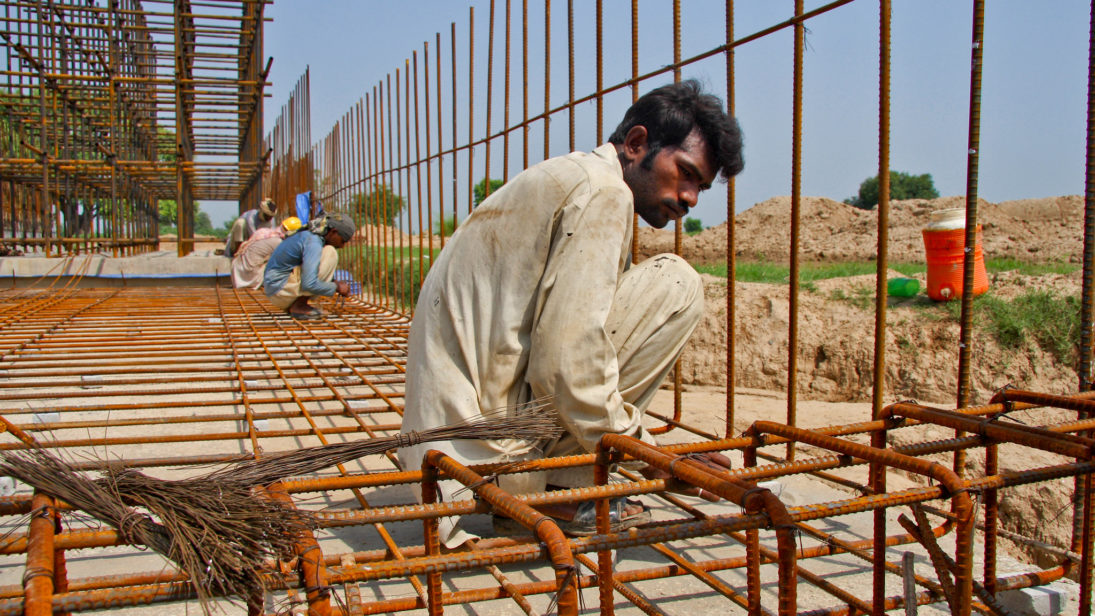
Ever since the launch of the China-Pakistan Economic Corridor (CPEC) in 2015, there has been debate regarding its viability in the economic, political, and security realms of Pakistan. The project has gained much traction in academic discussions as well as policy circles and often touted as a “game-changer” for Pakistan’s place in the global economy, although the true potential of CPEC will only manifest itself with the passage of time.
One under-explored topic in this debate on CPEC’s potential is the human security angle. CPEC is a part of the Belt and Road Initiative (BRI), a project that is often described having a focus on human security. The project will have both benefits and repercussions for the human security landscape of South Asia, with three significant aspects of human security – economic, security, and environmental – reaping the benefits of and suffering ramifications from CPEC as it progresses.
A Project for Economic Upheaval?
CPEC may have grave implications for the economic stability of Pakistan. According to a report, Pakistan is one of eight countries that could come under debt distress due to Belt and Road Initiative (BRI)-led financing in the future. The recent closure of the $2 billion USD coal power project in Rahim Yar Khan was reportedly due to the high costs involved in completing it. The government is reviewing other projects as well, which are expensive and often regarded as setting up a “capacity trap.” According to government sources, contracts have already been given for surplus generation capacity and any addition will simply be detrimental. Within Pakistan, officials and analysts fear that the heavy investment by Beijing may create the perception that other interested foreign investors cannot compete with China. Additionally, there have been concerns that the country may be unable to pay back loans in the coming years.
Similar to the situation in Sri Lanka in which China took control of Hambantota port due to the country’s inability to repay its debt, it has been speculated that Beijing intends to acquire Pakistani farmland with the aim of supplying its own domestic market.
There has been minimal discussion in policy circles on the potential scenario of a macroeconomic crisis after the launch of the second phase which has begun with the start of 2019, which will primarily focus on agricultural development. In a scenario in which Pakistan is unable to make its debt payments, China may acquire ownership of the leased assets in exchange of a bailout. Similar to the situation in Sri Lanka in which China took control of Hambantota port due to the country’s inability to repay its debt, it has been speculated that Beijing intends to acquire Pakistani farmland with the aim of supplying its own domestic market. Moreover, an influx of Chinese workers and companies might be disadvantageous to local firms and labor markets. This is because Chinese contractors tend to bring their workforce completely from China, leaving often no chance of employment for local communities. In the first phase of the construction of the Gwadar port, out of the 600 workers, only 100 were from Balochistan, where the port is located. This in turn is fueling a sentiment of exploitation among the local populace and giving fillip to separatist organizations.
Challenging Security Landscape
The second important debate is around the threat posed by militant organizations to the development projects of CPEC. The Western Route is particularly vulnerable in this regard as it passes through the restive province of Balochistan. Baloch separatist organizations view the Chinese investment as an exploitation of local resources and deem China a foreign intruder. The recent attack on the Chinese consulate is a testament to the fact. The need to secure the CPEC route led to the formation of a separate security division, comprising 9,000 individuals from the Pakistan Army and 6,000 paramilitary forces, to protect Chinese workers and projects under CPEC. Thus, the presence of CPEC may be exacerbating existing grievances and violent separatist sentiment in the province and across Pakistan.
Regional circumstances also threaten to undermine CPEC: India-Pakistan tensions, the withdrawal of the United States from Afghanistan, and the precarious security situation in Afghanistan all pose additional challenges to the project’s future, as regional instability and a surge in militancy will be unfavorable to development projects. The terrorist landscape is also shifting with Baloch ethno-nationalist movements having garnered support from abroad and the arrest of Kulbhushan Jadhav, who Islamabad maintains is an Indian spy. This Cold War-era proxy-ism could worsen the militant threats facing CPEC and is not a good omen for the security of Pakistan and the region.

Environmental Costs
The third and the most important ramification of the project is in the form of environmental costs posed by CPEC. The special IPCC report released in 2018 indicates a dangerous scenario for the globe. It has established that the target of the Paris Agreement – to keep the global average temperature from exceeding 2° Celsius above pre-industrial levels – is insufficient to mitigate the most deleterious effects of climate change. In fact, the ramifications of climate change on the planet have come at a faster pace and with greater severity than previously predicted. Pakistan is already one of the top ten countries affected by the phenomenon of climate change. According to a recent report, two-thirds of Himalayan glaciers will melt by 2100 due to atmospheric pollution, which will have unintended consequences for South Asian countries. Development gains risk being reversed. As pointed by a recent study, the project is anticipated to have serious repercussions in areas where it passes through a landscape with medium deforestation and prior development. Such landscapes are common in some of the northern areas of Pakistan and the upper region of Punjab.
Because of CPEC-related infrastructure development in [the northern areas of Pakistan], there may be increased deforestation, a subsequent loss of biodiversity, and a surge in carbon emissions due to movement of heavy vehicular traffic.
Because of CPEC-related infrastructure development in these areas, there may be increased deforestation, a subsequent loss of biodiversity, and a surge in carbon emissions due to movement of heavy vehicular traffic. The ecological costs of the project also cannot be neglected as road infrastructure development always disturbs local biodiversity. The natural habitat, flora, and fauna become vulnerable as forests are cleared for road construction and infrastructure development. Gilgit Baltistan, the starting point of CPEC, remains particularly vulnerable, as it is a habitat for diverse wildlife, glaciers, and forests.
CPEC will also bring several coal plants for power generation, with adverse impacts in the form of increased greenhouse gas emissions. Interestingly, China is closing its own coal power plants – owing to its increased pollution levels in major cities – while at the same time investing in 240 coal power plants in in twenty-five of the Belt and Road countries. Even in developed countries, enforcement of environmental regulations can oftentimes be weak. In the case of developing countries like Pakistan, governmental checks on environmental standards are not adequate. A case in point is the construction of the Islamabad-Rawalpindi metro bus project in which the Pakistan Environmental Protection Act (PEPA) was violated.
Conclusion
CPEC is typically touted as a game-changer, but it remains to be seen whether it is an initiative for the socioeconomic development of Pakistan or a securitization initiative aimed at saving China from economic downturn or geostrategic encirclement. It has been reported that China may be seeking to securitize dimensions of the corridor, such as the special economic zones and railways. The militarization of Chinese-built railways within the broader Silk Road framework would aim to ensure rapid troop mobility for the People’s Liberation Army (PLA). The maritime component will be important to watch in the context of CPEC given the presence of the strategically-located Gwadar port. If Gwadar were to be leased to China more or less like Sri Lanka’s Hambantota port – as some fear – this would allow Chinese geopolitical and geo-economic expansion into the Indian Ocean.
The challenges of CPEC can be met by proper policy formulation. In the economic domain, Pakistan can weigh the investment ventures against their potential to benefit the local population. The details of projects should be made public to foster inclusivity and ownership of the process, rather than alienation and intrigue. Aspects of CPEC projects that have received criticism from the locals should receive proper focus and planning. The state should make a more concerted effort to pacify separatist elements by engaging them through negotiations and keep a check on external factors by maintaining a robust foreign policy with neighboring countries so that no other soil can be used for any kind of support to separatist elements. The environmental aspects of the infrastructure projects need to be scrutinized in terms of deforestation and carbon emissions before they are implemented. In addition to this, strict strategic environmental impact assessments should be carried out. More focused policies in these arenas might transform CPEC into a development venture that can reshape the human security landscape of Pakistan.
***
Image 1: Asian Development Bank via Flickr
Image 2: Bloomberg via Getty


